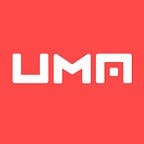Risk Labs Developer Mining Update and Retrospective
Tl;dr — Risk Labs will be discontinuing developer mining in its current form on October 4th, 2021. The program was responsible for a majority of UMA’s growth in the last year. It provided people a reason to learn how to use UMA, attracted new developers, and grew the community.
Background
Risk Labs announced developer mining on November 3rd, 2020. The intention of the program was to “allow devs to earn ownership in a network that they help create.” Risk Labs was to distribute 50,000 $UMA tokens each week to developers. The distribution would be based on the value the products were able to attract.
Participating teams and independent developers include Jarvis, Yam Finance, Domination Finance, Open DAO, Perlin, and Harvest Finance. These products include a range of synthetic assets: gold, Ethereum gas, a cryptopunk index, a wallstreetbets meme stock index, BTC and ALT domination pairs, Bitcoin Cash, stablecoin spread, and basis products for both ETH and BTC.
Developers also launched yield dollars against UMA, PERL, OCEAN, ETH, BTC, FARM, and OPEN.
The financial opportunity created by these products was responsible for the growth of UMA’s community. Developers and liquidity miners joined and became a part of the UMA tribe. It is from this foundation that UMA is able to emphasize a strategic focus on LSP products, treasury management tools, KPI options, and an unannounced infrastructure product.
Retrospective
The program was effective in attracting both developers and users and the range of products mentioned above.
Over time, new products were launched to optimize for developer mining yield, but did not offer as much by way of use. Few products gathered a majority of the network’s liquidity but had only a portion of the trade volume.
This also meant that more useful products had to compete for liquidity rewards, which was difficult due to those products often having more price volatility. Farmers understandably preferred less volatile positions, so as to avoid liquidation risk and to maximize capital efficiency. In order to attract farmers’ liquidity, developers increasingly launched safer products, despite the market’s risk appetite for high returns.
Risk Labs could have continued to tailor the program to address these problems. However, it became apparent that further calibrating a permissionless incentive program was less optimal than a bespoke one.
Risk labs will continue to support projects that are strategically aligned by providing tailored grants. Farmers will still have yield opportunities in the future to help provide liquidity to these products.
Conclusion
The program served an important purpose in UMA’s adoption roadmap. Generally speaking, it was a mechanism that provided incentives for people to pay attention to UMA.
In many ways, KPI options have replaced this. The program has been extremely successful to engage the community to help encourage protocol adoption. UMA’s suite of treasury management tools and KPI options are gaining traction with DAOs. These products require evangelists and educators, not developers and liquidity.
Risk Labs expects to use the developer mining model in the future, depending on its relevance to UMA’s strategic focus.
For questions and feedback, please join discord.umaproject.org.
